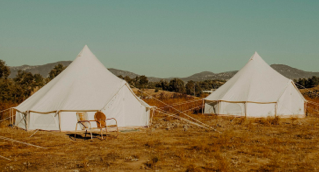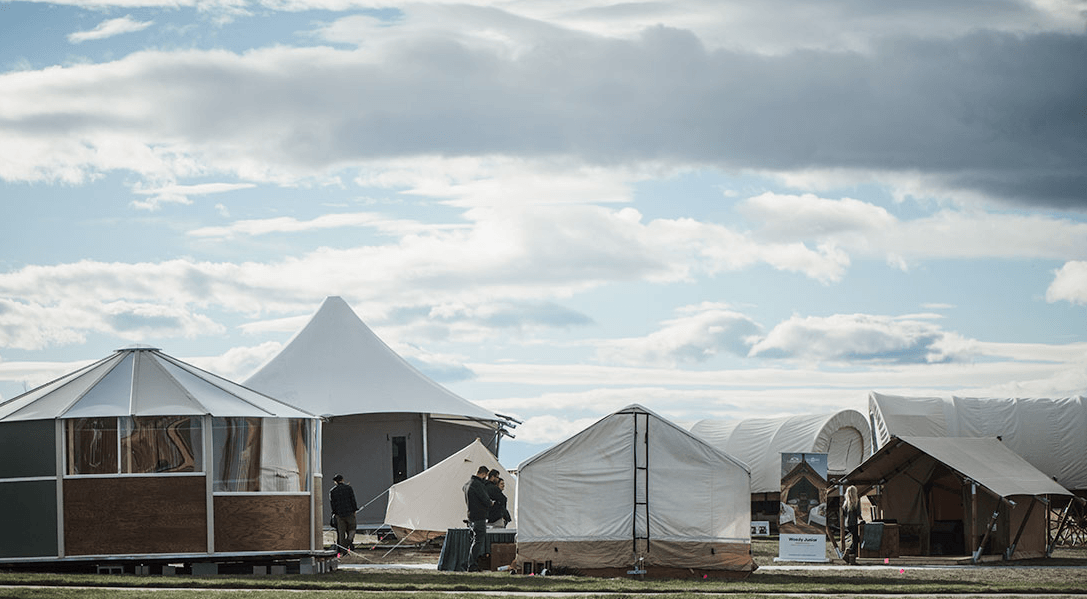Call Us: 1-971-220-8360
Free Shipping

Pay No Sales Tax
30-Month Warranty
Call Us: 1-971-220-8360
Tents
Shop


The LiT List
Glamping & Camping Ideas + Resources
Camping Gear Storage Ideas to Save Time Before Your Next Adventure
5 min read
Is your camping gear spilling over into the garage? Frustrated when you can’t find that one piece of outdoor equipment you need? Hate to break it to you, but it might be time for a major overhaul of how you organize and store your camping gear.
In this guide, we offer up some tried-and-true camping gear storage ideas that are both practical and time-saving. That way, when you’re ready to hit the road for your next adventure, you can grab your gear and go… without all the fuss.
Practical and Time-Saving Camping Gear Storage Ideas

Before we jump into these camp gear storage ideas, let's make one thing clear: it doesn't have to be pretty, just organized. Your garage is not an outdoor gear store showroom. Chances are, you don't even have wall space for that pegboard display anyway.
Instead, focus on time-tested and practical ways to make your outdoor equipment quickly accessible and easy to find.
Sort Gear by Category or Equipment
Sorting by category is a great way to organize camp gear. Take inventory of all your gear and equipment, then separate them into piles to get a bird's-eye view of how much storage space you really need.
Sort your camp gear by items. For instance:
- Shelter
- Sleeping
- Cooking
- Cleanup
- Clothing
- Sports/Toys
Donate Unused Camp Gear
As you begin to sort your camp gear, consider how long it's been since you last used it. Sure, we all have gadgets that come in super handy once in a blue moon and gear we'd never part with. But if you stumble across older gear you've since upgraded, and maybe even forgotten it existed, then it might be time to say goodbye and let go of it.
Luckily, there are lots of ways to donate or trade gear:
- Outside's Gear Up Give Back Program
- REI's Re/Supply Program
- GearTrade
- Eugene Gear Traders
- Local Sierra Clubs, Scouts, or shelters
Use Heavy-Duty Bins and Boxes

Choose lidded bins or boxes to sort your gear. Unlike cardboard boxes or open crates, containers and boxes also protect gear from moisture and stack to free up floorspace (whether you invest in a shelving unit or not). If you like, choose your bins before sorting the gear. This way, you can place gear directly into the bin to see how much space it takes up (and whether you need to separate your equipment into two bins).
So what kind of bin? Clear bins are great for viewingwhat's inside. However, they can be flimsier than their thicker black bin counterparts. But if you prefer the more solid, rugged totes, an outside label is a must!
Apply Labels and Lists
Whatever style of bins you choose, give them a general label and list the contents. For example, you could label the bin "Cooking Gear" and compile a longer, more detailed list of what it carries, such as your portable stove, Dutch oven, firestarters, lighter fluid, grill utensils, seasonings, foil, etc. You may even designate another bin specifically for your "Camp Kitchen," including extra prep items like a cutting board, plates, mugs, cups, utensils, paper towels, and more.
Since you'll likely be transporting these bins and totes directly to the campsite, choose waterproof, wipeable labels (similar to kitchen pantry labels). If your packing list is too long for a label, you can laminate a reusable checklist to the side of the bin. Keep in mind that this list not only displays what's inside, but also helps you repack later! You could create a dry-erase checklist and tick off boxes as you go.
Think Color Coding and Seasonal Rotations

Aside from labels and lists, take it a step further with color coding and seasonal storage bins. As with anything — from budget spreadsheets to family calendars — color coding is your friend. And your camping gear storage is no different.
Apply colored tape to bin labels to distinguish categories, and, with a glance, you have a general understanding of what camp gear each bin holds.
It could look something like this:
- Green: Cooking, Food, & Fuel
- Blue: Water & Hygiene
- White: Sleeping Gear
- Orange:Tools & Repair
- Red: Safety & Emergency
- Purple: Camp Games & Entertainment
If it makes sense for your outdoor lifestyle, designate specific storage bins for camp gear or outdoor equipment you don't require year-round. This is especially true for winter camp gear. Designate smaller boxes to sort your winter-related camp gear, such as hand warmers, or stow away winter sports equipment into a corner of your camp gear space until you need it.
Create Space to Hang Sleeping Bags and Lofty Items
You might be tempted to vacuum-seal bulky puffer jackets and down sleeping bags to make more space. In fact, you can do this for short-term travel and transporting camping gear. However, vacuum-sealing these kinds of items is not recommended for long-term storage. The reason is that it can do damage to the insulation and, over time, affect the loft and overall warmth. So why not cut to the chase and make space for them in other ways?
Instead of vacuum sealing, the general recommendation is to use large cotton storage sacks (which can then be packed into a large waterproof bin, if you like). Alternatively, you can hang them from a clothes rack – just be sure to do so in a climate-controlled place like a spare coat closet.
Leave Room for Folding Chairs and Bulky Gear
Folding chairs, lanterns, wood-burning stoves, picnic tables, kayaks, and bicycles can become quite bulky. And some camp gear simply won't fit in bins. So how do you store it?
The best way to go about this is to make room. Leave a cubby space in your camp gear for it to slide into when not camping. You can also use hanging racks (either along a wall or the ceiling) to elevate it off the ground and keep the space tidy.
Keep Important Tools and First Aid in Go Bags
Secure smaller camp tools and your first-aid kit in a neat bag or a roll-up canvas organizer. Multi-tools, repair kits, carabiners, stakes, and rope are all helpful emergency items. You never know when you'll need them, so designate a go duffel bag that you grab every time you head out camping.
And keeping them in a smaller storage kit lets you find what you need quickly. Imagine having to dig through bins in the dark during a rainstorm when your tent has sprung a leak. Or frantically searching when someone has cut themselves. Instead, know exactly where they are to save valuable time.
Store Camp Gear In Ways That Make Sense For You

Hopefully, these camping gear storage ideas get you started on the right path, so you can hit the road for adventures whenever you wish. But the organization methods that work for some don't always work for others. Consider how you organize other things around your house, and do the same for your camping gear. Eventually, you will discover a way to organize and store camping gear that makes sense to you.
Related Resources

THE LIT LIST 2 min read 2 Comments
Glamping Show USA – Sept. 2026 – Denver, CO
If you are looking to start a glamping business or tips on how to improve and grow an existing onIf you are looking to start a glamping business or tips on your on to improve and grow and existing one, then we highly suggest attending the Glamping Show USA in Colorado.

THE LIT LIST 8 min read 1 Comment
Camping Gift Ideas for People Who Have Everything
Camping is a great way to get outside and enjoy nature. But what do you do if the camper you are buy Popular Blogs
Camping Gift Ideas for People Who Have Everything
The Best Portable Tent Heaters - Ways To Heat A Canvas Tent
Glamping in Northern California: 8 Luxury Sites
Waterproofing A Canvas Tent - Retreating Canvas
33 Camping Quotes to Inspire Your Next Adventure
What Is Glamping? Origins, Definition, Destinations & More
10 Tips for Staying Warm While Winter Camping
How to Maintain and Clean a Bell Tent
Essential Family Camping Checklist: What to Pack [PRINTABLE]
Backyard Glamping Checklist for an Unforgettable DIY Glampsite
Popular Products
Subscribe
Sign up to get the latest on sales, new releases and tips
BECOME AN INSIDER
We’ll periodically share inspiration, bell tent releases, special offers, and event notifications with ya.



